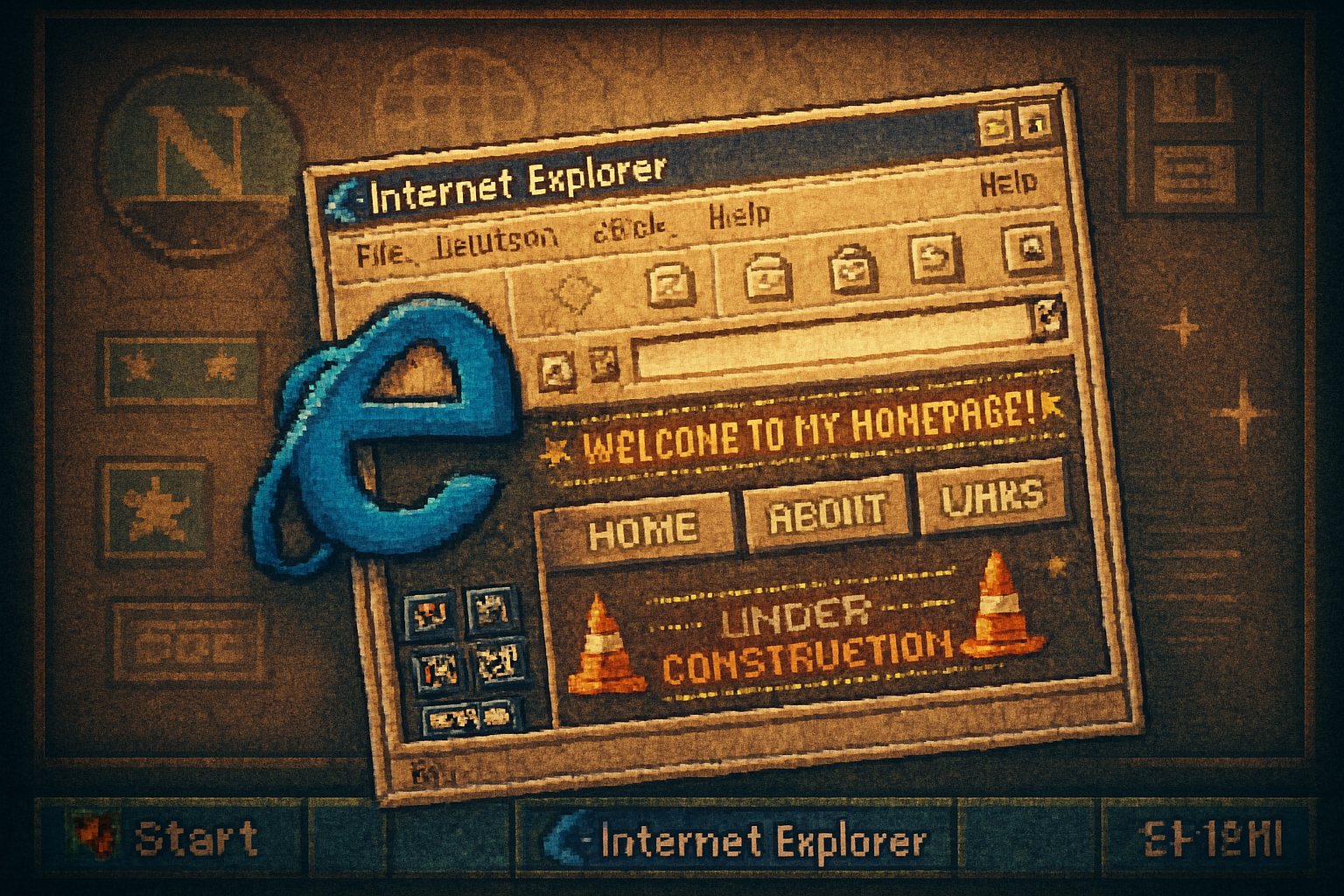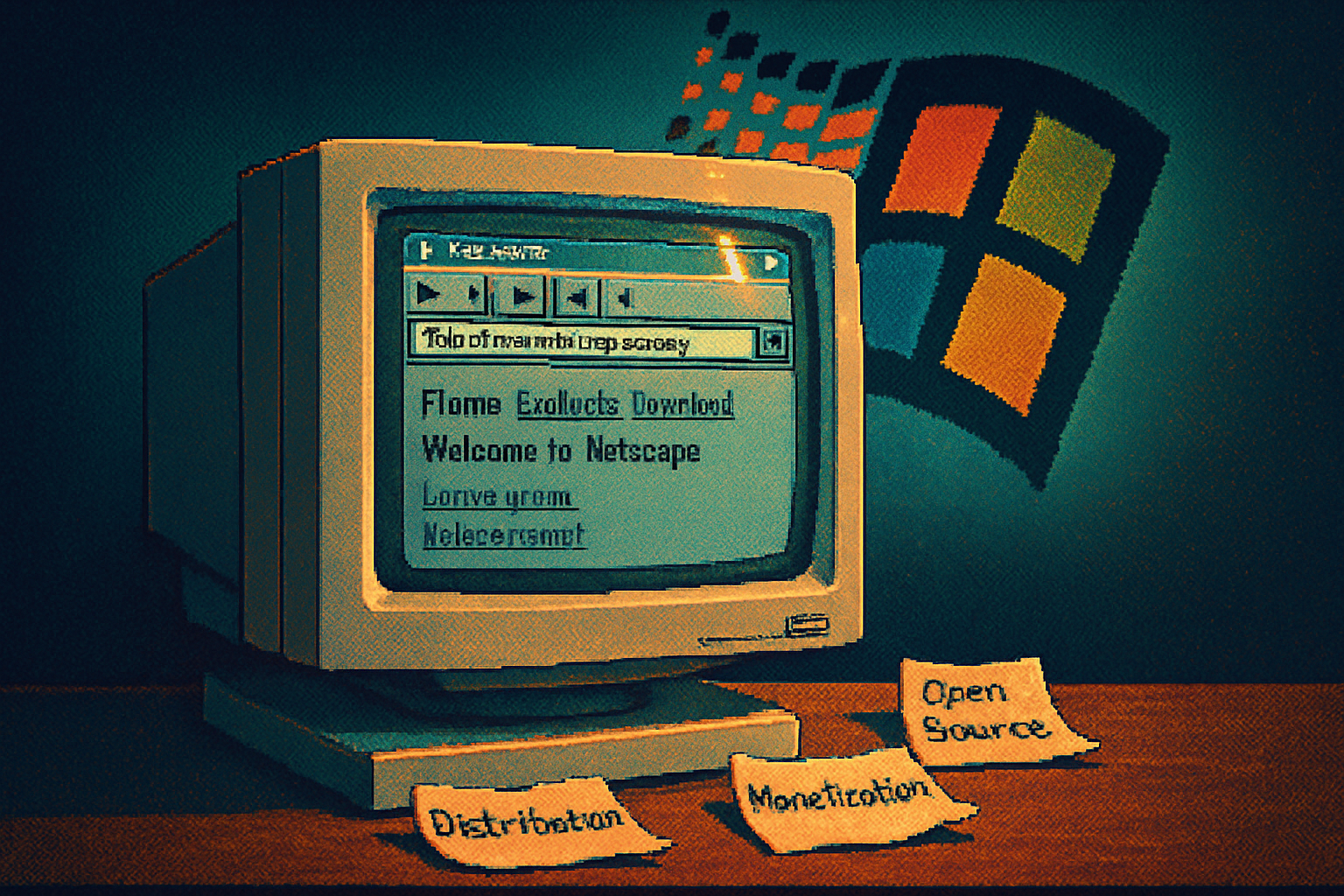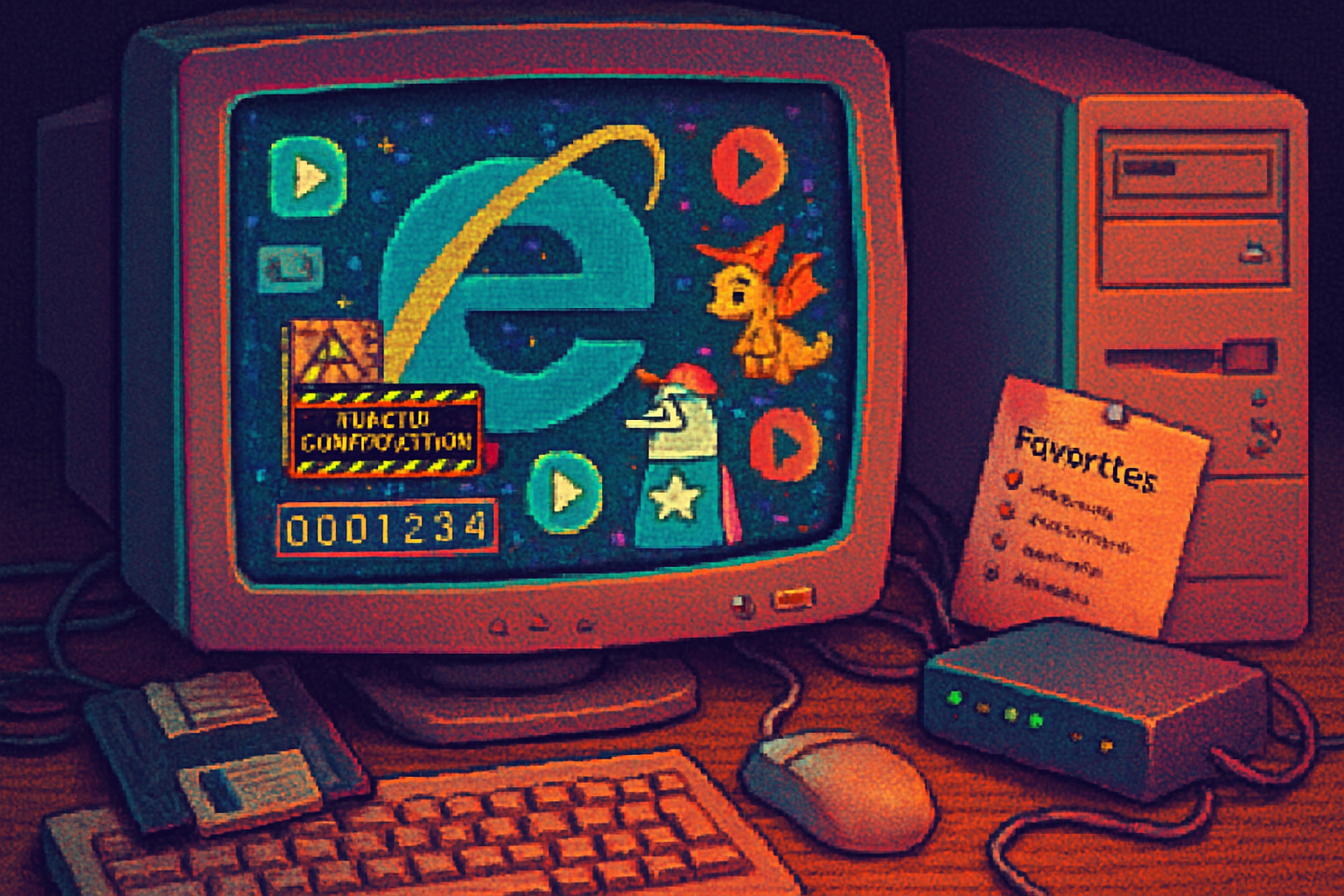· retrotech · 6 min read
The Rise and Fall of Internet Explorer: A Love Letter to a Browser We Knew Well
A nostalgic, in-depth look at Internet Explorer’s journey from Windows-bundled dominance to cultural punchline - and the lasting lessons it left the web. We trace key moments, technical choices, and the human experience of browsing the early internet.

A short love letter
It feels strange to write affectionately about a product most of us now use only in jokes and archived screenshots. Internet Explorer (IE) wasn’t perfect - far from it. It was slow to adopt standards, it exposed users to security risks, and it inadvertently taught a generation of web developers terrifying hacks. But for many of us the first real web experience was through IE’s familiar blue “e”. It was the window that made the internet feel like part of the desktop.
This is a retrospective: how IE rose, how it fell, and what the browser taught the web along the way.
Beginnings: the browser that came with Windows
Internet Explorer debuted in 1995 as part of Microsoft’s aggressive push into the internet era. Bundled with Windows and updated rapidly through the late 1990s, IE rode the tidal wave of desktop computing and won market share partly because it arrived pre-installed on millions of Windows machines - a distribution advantage that reshaped the browser landscape and sparked the famous browser war with Netscape https://en.wikipedia.org/wiki/Internet_Explorer and https://en.wikipedia.org/wiki/Netscape.
That dominance helped Microsoft win users quickly, but it also became the center of legal and regulatory scrutiny. The U.S. antitrust case against Microsoft in the late 1990s highlighted bundling practices and the strategic value of shipping a browser with an operating system https://en.wikipedia.org/wiki/United_States_v._Microsoft_Corp..
Feature-driven growth - ActiveX, Trident and the Windows web
IE wasn’t only pre-installed; it was tightly integrated with Windows. Microsoft introduced the Trident rendering engine and platform-specific extensions like ActiveX, which allowed web pages to run rich, system-level components. For enterprise and multimedia applications in the 1990s and early 2000s, that felt like magic: web pages could embed complex behavior and talk directly to printers, local databases, and hardware.
But those conveniences came at a price. ActiveX controls became an attack surface for malware, and vendor-specific features encouraged developers to build sites that worked only in IE. The result: a web split between the Windows web and the emerging cross-platform, standards-based web.
The era of IE6 and developer frustration
If any single release defined IE’s reputation, it was IE6 (2001). Ships sailed, intranets were built, and many corporate web apps were coded specifically to its quirks. Over time IE6 became infamous because it supported old rendering behaviors, ignored evolving CSS and HTML standards, and lacked modern developer tools. The browser’s slow update cadence - tied to Windows release cycles - meant bugs and nonstandard behavior lingered for years.
Developers responded with hacks: conditional comments, CSS workarounds, and JavaScript shims that targeted IE’s unique behavior https://en.wikipedia.org/wiki/Conditional_comment. The web forked: sites that prioritized corporate compatibility often prioritized IE quirks; sites built for the broader web pushed standards and cross-browser solutions.
New players and a changing web: Firefox and Chrome
Two major challengers shifted the landscape. Firefox (launched 2004) pushed open standards, strong extension models, and an ethos of web compatibility. Later, Google Chrome (launched 2008) reimagined speed, process isolation, and developer tooling with an emphasis on modern web APIs https://blog.chromium.org/2008/09/google-chrome-stable-for-windows.html.
These browsers accelerated a cycle IE couldn’t match: faster releases, better dev tools, and clearer alignment with standards. Market share data over the 2000s and 2010s shows IE’s decline as users and developers migrated toward browsers offering speed, security, and predictable behavior https://gs.statcounter.com/browser-market-share/all/worldwide/history.
Security, perception, and the trust deficit
IE’s early architecture and Windows integration made it a tempting target for attackers. High-profile vulnerabilities and the widespread deployment of aged IE versions on unpatched systems created a long-lasting perception of IE as insecure https://en.wikipedia.org/wiki/Security_vulnerabilities_in_Internet_Explorer.
That perception mattered. Browsers are the frontline between users and the internet; when users don’t trust that frontline, they switch. The combination of faster, safer alternatives and an evolving threat landscape accelerated IE’s decline.
Microsoft’s pivot: Edge, IE mode, and the end of an era
Microsoft tried to modernize with Internet Explorer 7–11, introducing tabs, improved standards support, and security features. But the real reset came with Microsoft Edge (launched 2015) and ultimately Edge’s shift to the Chromium engine. Microsoft publicly signaled the browser’s end: Internet Explorer’s desktop application was retired for most Windows versions in 2022, with enterprises given migration tools and an “IE mode” in Edge to preserve legacy intranet sites https://www.theverge.com/2022/5/19/23132007/internet-explorer-end-of-life-microsoft-edge-ie-mode and Microsoft’s documentation on retirement https://learn.microsoft.com/en-us/lifecycle/announcements/internet-explorer-11-retirement.
This transition acknowledged two realities: many organizations still depended on IE-specific features, and the web had largely moved beyond IE’s architecture.
The human side: nostalgia and real memories
Ask people about Internet Explorer and you’ll get two kinds of memories. One is frustration: broken layouts, “This page is best viewed in Internet Explorer,” confusing plug-ins, and slow updates. The other is fondness: the first page you bookmarked, the awkwardly designed fan site perfectly displayed in your school computer lab, or the excitement the first time an embedded video just worked.
Browsers shape experiences. IE was the browser many of us used to discover blogs, forums, early social networks, and webmail. For a generation, the internet felt like part of the desktop because IE made it so.
Legacy and lessons for the modern web
IE’s story is more than nostalgia; it leaves a set of durable lessons:
- Bundling wins can warp markets. Distribution matters, but regulatory scrutiny follows. The U.S. v. Microsoft case showed how platform advantage can reshape competition https://en.wikipedia.org/wiki/United_States_v._Microsoft_Corp..
- Vendor-specific features fragment the ecosystem. Proprietary APIs like ActiveX helped in the short term but hindered long-term portability and security https://en.wikipedia.org/wiki/ActiveX.
- Fast iteration and good developer tooling matter. Chrome’s cadence and Firefox’s developer focus forced the rest of the industry to modernize.
- Backwards compatibility is a double-edged sword. Enterprises needed stability and compatibility, which slowed transitions to newer architectures. That tradeoff led to Microsoft supporting “IE mode” in Edge to ease migration.
These lessons helped usher in a more interoperable web and informed how modern browsers are built and released.
Timeline - key moments
- 1995 - Internet Explorer 1.0 debuts and begins shipping with Windows
- 1998–2001 - Browser wars, antitrust litigation around Microsoft’s bundling of IE
- 2001 - IE6 is released, later becoming infamous for standards lag.
- 2004 - Firefox launches and begins chipping away at IE’s dominance.
- 2008 - Google releases Chrome, shifting emphasis to speed and developer tools
- 2015 - Microsoft launches Edge, signaling a new browser strategy.
- 2022 - Microsoft retires Internet Explorer desktop application for most Windows versions; Edge offers IE mode for legacy sites
Final thoughts
Internet Explorer was messy and magical. It made the internet feel local; it allowed complex enterprise apps to migrate to the web; it caused long years of developer headaches; and it taught the industry to value standards, security, and rapid iteration. The browser’s decline is the story of a maturing ecosystem: distribution and dominance gave way to speed, standards, and choice.
So here’s to the blue “e”: we groaned at it, relied on it, and will always remember it as the portal that introduced many of us to the wild, early web. It deserved better than memes; it deserved to be studied. And in that study we find lessons for the next generation of platforms that will define how we explore the internet next.
References
- Internet Explorer - Wikipedia: https://en.wikipedia.org/wiki/Internet_Explorer
- United States v. Microsoft Corp. - Wikipedia: https://en.wikipedia.org/wiki/United_States_v._Microsoft_Corp.
- Conditional comment - Wikipedia: https://en.wikipedia.org/wiki/Conditional_comment
- Security vulnerabilities in Internet Explorer - Wikipedia: https://en.wikipedia.org/wiki/Security_vulnerabilities_in_Internet_Explorer
- ActiveX - Wikipedia: https://en.wikipedia.org/wiki/ActiveX
- Google Chrome blog announcement (2008): https://blog.chromium.org/2008/09/google-chrome-stable-for-windows.html
- Browser market share history - StatCounter: https://gs.statcounter.com/browser-market-share/all/worldwide/history
- “Internet Explorer desktop app retirement” - Microsoft Docs: https://learn.microsoft.com/en-us/lifecycle/announcements/internet-explorer-11-retirement
- The Verge - coverage of IE end-of-life: https://www.theverge.com/2022/5/19/23132007/internet-explorer-end-of-life-microsoft-edge-ie-mode



